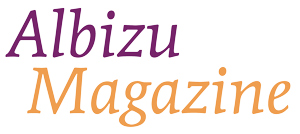O

ne of the first steps to mastering regulating our emotions is to understand what emotions are. We need to acknowledge the emotions to learn to regulate their intensity. The state of alert associated with them allows us to identify and give meaning to the emotional states, transforming maladaptive ones into adaptive states (Ford, 2017, p.232). Even though this topic has been extensively researched, it is necessary to bring this knowledge into practice so that people can use it in their daily lives. There are different theoretical models and definitions of emotions and emotional regulation. Emotions are “emergent events that arise from the brain’s efforts to give meaning to data from the senses, … and that are categorized in a given situation using an emotion concept label (rage or happiness, for example) (Wormwood et al. 2022).
“We are not responsible for emotions but what we do with them.”
Jorge Bucay
Most research identifies emotions as part of the responses to occurring events, which include biological, physiological, thought, and behavioral aspects. Although there is a series of internal responses that generate automatically, we have the ability to regulate, modify, and create adaptive emotional responses. Human beings are not passive impulse receivers, but we can build our emotions actively, our regulation process, and the emotional responses we generate.
Emotions serve us for multiple functions and manifest in different ways in different scenarios. We sometimes react differently. We build our emotional experiences and perceptions of other people’s emotions through the interaction of a complex system. We understand and experience emotions based on what we learned in our social context. The relearning process to identify emotions and develop emotional regulation strategies is key for well-being and health improvement.
Some of the functions of emotions are:
a) Protection/adaptation: They prepare us to respond to the situations that arise through life in various scenarios and generate specific reactions for us to act adaptively and protect ourselves from potentially adverse situations,
b) Informative: They offer information that helps us understand what our state of mind is, what other people’s state of mind is, and what the situation in front of us is like,
c) Social: They facilitate social relationships, allowing us to communicate feelings and
d) Motivational: They work as a force to direct behavior into a specific action. They determine how we respond, communicate, behave, and function.
In general, emotions determine the performance level of which we are capable in a state of balance or emotional imbalance. The inadequate management of emotions or coping processes can negatively impact our lives, health, and well-being.
On the other hand, emotional regulation is the process of shaping your emotions when you experience them and how you experience or express them. (Gross, 2014) This allows us to modify emotional states to foster appropriate, goal- and achievement-oriented behaviors (Shaw et al., 2014). Emotional regulation processes are related to the social, environmental, and contextual support that human beings have, biological, genetic, and temperament aspects, with the self-regulation skills that people develop over time and the internal and external motivations to self-regulate. According to Ford (2017), adequate emotional regulation offers us the ability to a) consciously focus attention, b) be aware of the environment and one’s own bodily, physical, and emotional state, c) resort to memory to learn from the past and effectively adapt to the present, and d) maintain or recover emotional states that improve well-being and facilitate steps (a) to (c).
Gross’s Emotional Regulation Process Model (1999) offers strategies to regulate emotions effectively. Sometimes, we use strategies that do not work for us to try and regulate emotions appropriately, such as avoiding experiences that generate unpleasant emotions, over-involvement with a situation, rumination, constant worrying thoughts, impulsivity, or constantly giving situations a negative meaning. These responses bring more emotional suffering. Gross’s model states four specific situations or moments in which we can use emotional regulation strategies that influence our behavior. Identifying those moments in the emotion-generating and regulating process can help increase the possibilities of facing emotional states and their consequences more adaptively.
Moment 1.
Situation: We face a particular situation, and we have the possibility of selecting which situation we want to be in, if it is possible to choose, or we can choose a situation modification. This moment allows us to act in a certain way to reduce the chances of finding ourselves in a situation that provokes unpleasant emotions, or we can face the situation, changing its elements. To have adequate emotional regulation in this part of the process, it is recommended:
- To leave the place where the situation occurs
- To reduce contact or participation in situations that generate unpleasant emotions. Some situations cannot be avoided. In these cases, use one of the other strategies below.
- Increase participation in activities that induce desirable emotions.
- Encourage positive social contact.
- Practice unconditional positive acceptance. Accept life situations as they are without judging them. This does not mean doing nothing or becoming resigned.
Moment 2.
Attention: in this situation, we can select where to focus or redirect the attention.
This allows us to modify our attention to modify our own emotions. The recommendations for adequate emotional regulation in this situation are:
- Try to find distracting elements. Focus your attention on something. For example, get started on some new artistic expression activity. You can listen to music, write, or talk to someone.
- Redirect your attention. You can do breathing exercises, visualization, mindfulness activities, and guided meditation.
- Shift the attention focus. If possible, “unplug” from that situation and refocus on another activity.
Moment 3.
Assessment: we can change the concept or meaning of the situation and reevaluate it to change its emotional impact. To have proper emotional regulation in this situation, it is recommended:
- To seek support from someone with good emotional regulation to help you reflect and see other angles of the situation.
- To look for and suggest alternative interpretations through reevaluation and revaluation of the situation.
- To restructure the meaning given to the situation.
Moment 4.
Response: we can modulate the responses to respond appropriately in a given situation. The recommendation for proper emotional regulation in this case is:
- Increase and practice the positive alternative behavioral responses you have previously worked on.
- Learn and put into practice conflict mediation and negotiation strategies.
- Restrict the responses available. Decide to act differently.































